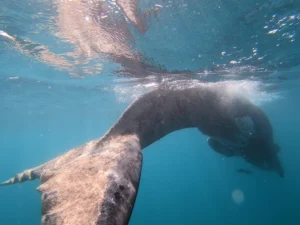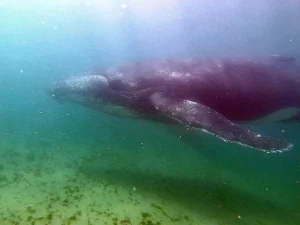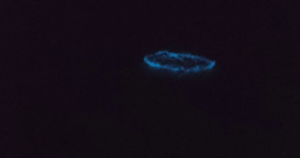Krill are small, shrimp-like filter-feeding crustaceans that play a crucial role in marine ecosystems, particularly in the Southern Ocean. Despite their diminutive individual size, krill have a combined total biomass of over 300 000 000 tonnes, which in turn has a profound impact on global nutrient cycling, carbon sequestration, and food webs. Their movement pattern of swimming upward towards the surface at night to feed on phytoplankton and descending to deeper waters during the day to avoid predators helps transport nutrients between different ocean layers and contributes to the mixing of the water column.
Krill are primarily found inhabiting cold, nutrient-rich waters in the Southern Ocean surrounding Antarctica, where phytoplankton, microscopic algae, and other tiny particles form an abundant food source. As swarming animals, they congregate in groups of up to 60 000 organisms per cubic metre. When caught in a predator feeding frenzy, krill swarms disperse rapidly, with individuals having been observed to perform an instantaneous moult, whereby the exoskeleton is left behind as a distraction.
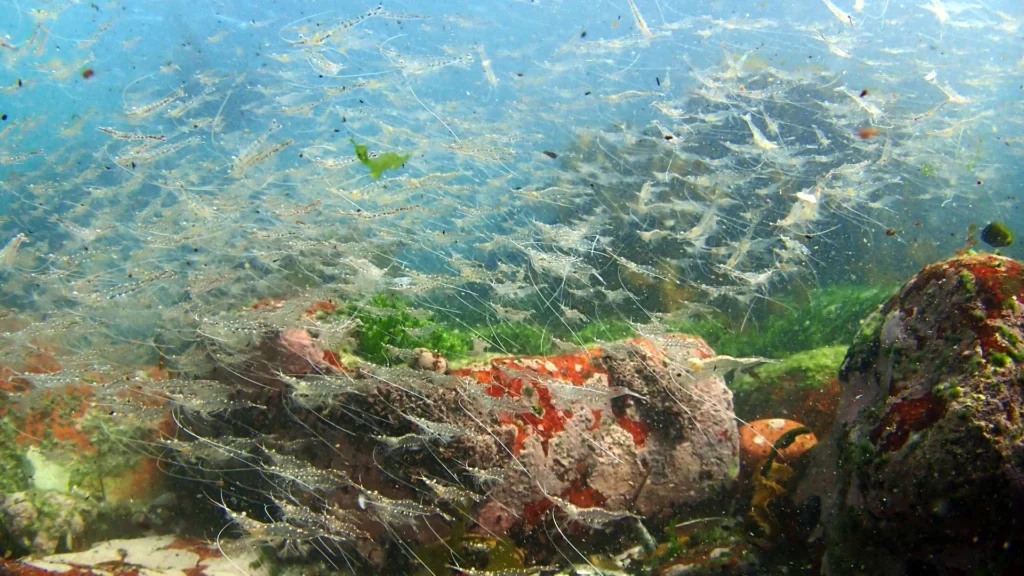
This moulting is also a typical component of the krill life cycle, during which they undergo several developmental stages. Hatching from eggs as tiny larvae, krill experience a series of moults before reaching adulthood. As they grow, they become more specialised in their feeding behaviours and develop a unique filtering structure called a “bristle basket” that helps them capture their food. Krill lifespan varies between species, with individuals surviving for approximately two to six years, during which they reach their adult size of one to two centimetres in length.
Krill are a crucial link in the marine food web, serving as a primary food source for a variety of marine organisms, including fish, seabirds, seals, and whales. Species such as baleen whales rely heavily on krill as their predominant sustenance during their feeding migrations. We have encountered swarms of krill at Glencairn and Long Beach and have even been lucky enough to witness humpback whales feeding on them during one of our Adventure Freediver I courses. Despite their small size, the combined biomass of krill is fundamental to the health and population dynamics of these higher trophic level species.
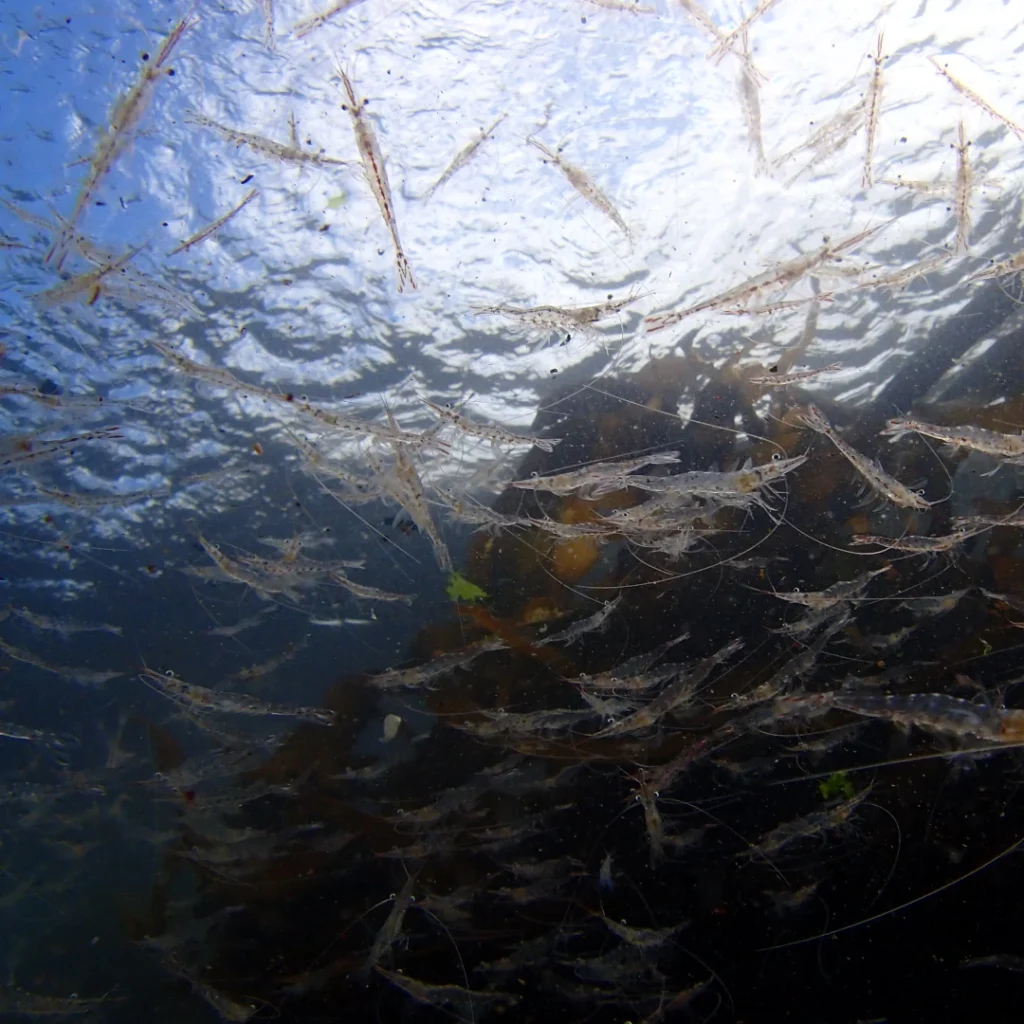
Climate change and human activities are seeing an impact on krill populations, as warming ocean temperatures and changes in sea ice extent alter krill distribution and abundance, affecting their availability to predators. Furthermore, overfishing presents a cause for concern, as krill are harvested for various purposes, including as a source of omega-3 fatty acids for dietary supplements and aquaculture feed. Proper management of krill fisheries is essential to ensure their sustainability and the health of the broader marine ecosystem.
Krill are a keystone species in marine ecosystems, playing a vital role in nutrient cycling, carbon sequestration, and supporting the food web. Their ecological significance extends beyond their small size, influencing the survival and reproduction of numerous marine species, including some of the largest and most iconic creatures on Earth.

